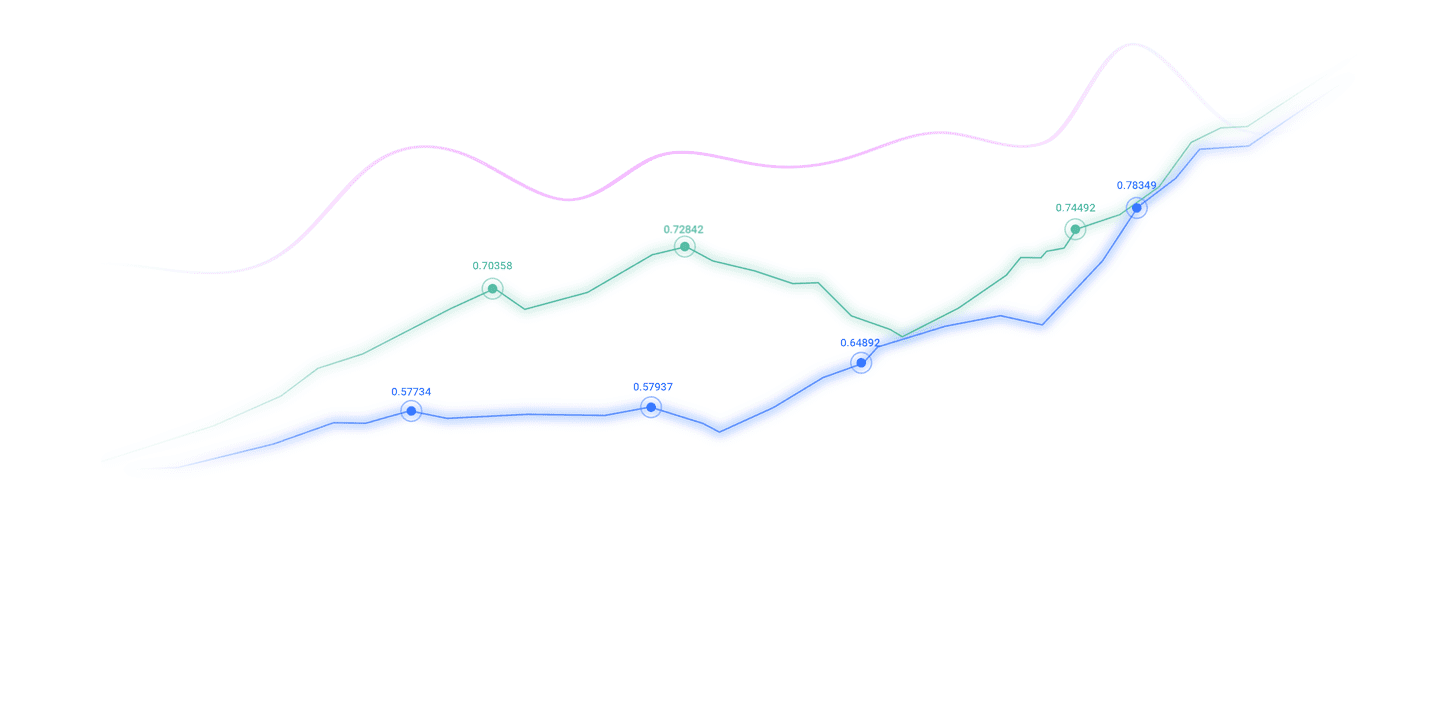Trusted by over 15 Million Traders
The Most Awarded Broker
for a Reason
CATEGORIES
market analysis
Is the Swiss franc's "0.80 offensive and defensive battle" reaching the top, or is it the last breath before falling back?
Wonderful introduction:
One person’s happiness may be fake, but the happiness of a group of people can no longer distinguish between true and false. They squandered their youth to their heart's content, wishing they could burn it all away. Their posture was like a carnival before the end of the world.
Hello everyone, today XM Forex will bring you "[XM Foreign Exchange Decision Analysis]: Is the Swiss franc's "0.80 offensive and defensive battle" a rush to the top, or is it the last breath before falling back?". Hope this helps you! The original content is as follows:
On Monday (October 13), the US dollar against the Swiss franc traded above the 0.8000 integer mark during the European session. After the exchange rate's rapid retracement of nearly 1% last Friday, there was no sustained selling pressure at the beginning of the week, and it was more reflected in sideways consolidation around the mark; short-term momentum showed signs of recovery, but the resistance above was intensive, and the direction selection was still in the process of brewing.
Fundamentals
From a macro level, the dominant variable at the beginning of the week is still the intertwining of domestic uncertainty and interest rate expectations in the United States. On the one hand, the U.S. federal government shutdown risks extending to a third week. Congress has still not made a breakthrough on funding issues, and the Senate will not consider procedural votes until Tuesday afternoon at the earliest. This fiscal and political sluggishness makes it difficult for U.S. short-term and long-term yields to form a consistent upward driving force. The overall elasticity of the U.S. dollar is limited, and risk appetite is also suppressed in a moderate range. On the other hand, the White House's tone has softened www.xmmen.compared with the previous period, reducing the immediate premium for extreme risks. However, the market still has doubts about "whether the relaxation can be translated into sustained policy visibility." Therefore, there is no typical chasing behavior, and the dollar's rebound space is naturally "limited."
In terms of interest rate expectations, the path given by CMEFedWatch is still biased toward easing: the probability of the Federal Reserve cutting interest rates by 25 basis points in October and December is about 96% and 87% respectively. Such a high conditional probability is equivalent to a pre-dilution of the U.S. dollar's interest rate advantage, making it difficult for the rebounding U.S. dollar to drive the U.S. dollar up against the Swiss franc; relatively speaking, this is more like providing a time window for the Swiss franc's "defensive counterattack."
The variables on the Swiss side are concentrated in the inflation chain: this week the market will focus on September producer and import prices. The indicator had contracted for four consecutive months.If there is a rebound, it will alleviate deflation concerns to a certain extent and weaken the outside world's bets on the Swiss National Bank to "further lower policy interest rates and deepen negative interest rates." Theoretically, a rebound in price pressure will raise the uncertainty range of real interest rates and strengthen the endogenous stability of the Swiss franc. However, if the data is not ideal, the expectation of "continuation of easing" will pose a mild headwind to the Swiss franc, thus providing a breathing window for the exchange rate above 0.80. To sum up, the US dollar is subject to the mid-term anchor of the interest rate cut path, and the Swiss franc is subject to the short-term verification of price pressure. The result of the superposition of the two is that the US dollar against the Swiss franc presents an interval feature of "resistance at the top and support at the bottom", rather than a trend run.
Technical aspect:
Observed from the daily chart: the Bollinger middle rail is at 0.7961, the upper Bollinger rail is at 0.8045, and the lower rail is at 0.7877; the current price is running above the middle rail and below the upper rail, indicating that the short-term is in a state of "following the trend but not breaking through the upper edge of the bandwidth." If it breaks above 0.8045, the first static resistance is at last week's high of 0.8075, with 0.8170 above it; the further 0.8362 is a mid-term resistance band and is a test after the trend is extended. In terms of support below, 0.8000 is a prominent psychological barrier and an hourly intensive trading area. Below it is the Bollinger middle track 0.7961, the former low intensive area 0.7890 (which forms a dynamic-static resonance with the Bollinger lower track 0.7877), and further below is the "pinpoint low" 0.7871 and the low 0.7828.
In terms of indicator resonance, MACD shows that DIFF is 0.0007, DEA is -0.0003, and the histogram is 0.0021, which is in the early stage of "just turning positive near the zero axis". The typical meaning is that the momentum is restored but the slope is slow, which is slightly conducive to trying to follow the trend; RSI (14) reported 54.9146, just above the midline, neither overbought nor oversold, pointing to "strong shock". www.xmmen.combined with the fact that the width of the Bollinger Bands has not expanded significantly, the current situation can be characterized as a "tentative upper edge backtest after the Bollinger Bands squeeze". Breakthroughs need to be confirmed by transaction and volatility resonance, otherwise it will easily evolve into a false breakthrough and backtest the 0.8000-0.7961 range.
Outlook
Short-term scenario A (longer): If U.S. bond yields recover moderately and the Swiss price indicator fails to recover significantly, the USD/CHF is expected to hit the Bollinger upper track of 0.8045 and conduct a "support-resistance conversion" backtest of 0.8075; once it stabilizes, the technical target will point to 0.8170. The core of this path lies in whether "volatility expansion and heavy volume breakthrough" resonate, otherwise the upward breakthrough will be difficult to sustain.
Short-term Scenario B (Bearish): If the U.S. government shutdown is prolonged, macro uncertainty re-emerges, or Swiss price data rebounds significantly, suppressing bets on further easing by the Swiss National Bank, the exchange rate may fall below 0.8000 and backtest 0.7961; if the middle rail falls, the decline will extend towards 0.7890-0.7877, and then test the historical low zone of 0.7871 and 0.7828.. At this time, we should be wary of the false breakout characteristics of "quick retracement after breaking the position", especially during periods when liquidity is thin and program trading dominates.
The above content is all about "[XM Foreign Exchange Decision Analysis]: Is the Swiss franc's "0.80 offensive and defensive battle" a rush to the top, or the last breath before falling back?" It is carefully www.xmmen.compiled and edited by the XM foreign exchange editor. I hope it will be helpful to your trading! Thanks for the support!
Every successful person has a beginning. Only by having the courage to start can you find the way to success. Read the next article now!
Disclaimers: XM Group only provides execution services and access permissions for online trading platforms, and allows individuals to view and/or use the website or the content provided on the website, but has no intention of making any changes or extensions, nor will it change or extend its services and access permissions. All access and usage permissions will be subject to the following terms and conditions: (i) Terms and conditions; (ii) Risk warning; And (iii) a complete disclaimer. Please note that all information provided on the website is for general informational purposes only. In addition, the content of all XM online trading platforms does not constitute, and cannot be used for any unauthorized financial market trading invitations and/or invitations. Financial market transactions pose significant risks to your investment capital.
All materials published on online trading platforms are only intended for educational/informational purposes and do not include or should be considered for financial, investment tax, or trading related consulting and advice, or transaction price records, or any financial product or non invitation related trading offers or invitations.
All content provided by XM and third-party suppliers on this website, including opinions, news, research, analysis, prices, other information, and third-party website links, remains unchanged and is provided as general market commentary rather than investment advice. All materials published on online trading platforms are only for educational/informational purposes and do not include or should be considered as applicable to financial, investment tax, or trading related advice and recommendations, or transaction price records, or any financial product or non invitation related financial offers or invitations. Please ensure that you have read and fully understood the information on XM's non independent investment research tips and risk warnings. For more details, please click here


































































































